Membrillo (pronounced: mehm-BREE-yoh) is the Spanish name for quince paste. When we discovered an abandoned quince tree in our neighborhood this fall, we were blessed with quite a bounty of fruit. After we turned the first of our harvest into honey poached quince, I knew that the rest of our harvest would have to become homemade membrillo. I had only ever seen membrillo at my local Whole Foods and read about it online before, but I just knew that it would be delicious.
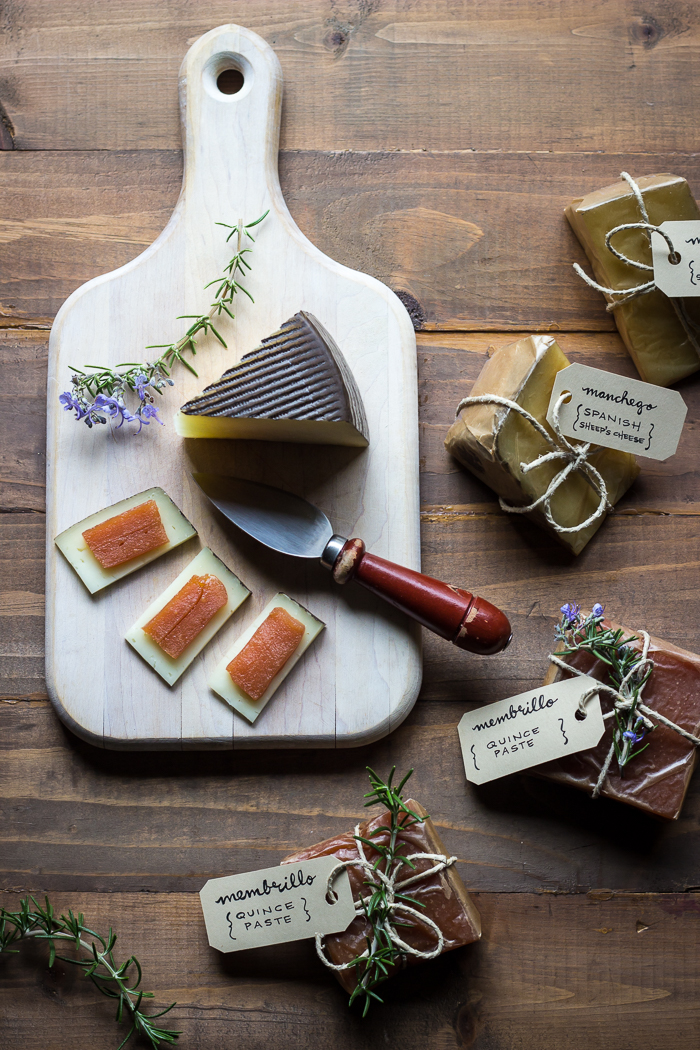
Upon researching membrillo and examining recipe after recipe, it became apparent that refined sugar is the typical ingredient used in transforming quince into quince paste. Reading up on the history of quince however, I found that in antiquity, before refined sugar even existed, quince was traditionally cooked with honey. Harkening back to the days of old, I set out to produce a honey sweetened membrillo and actually succeeded on my first try!
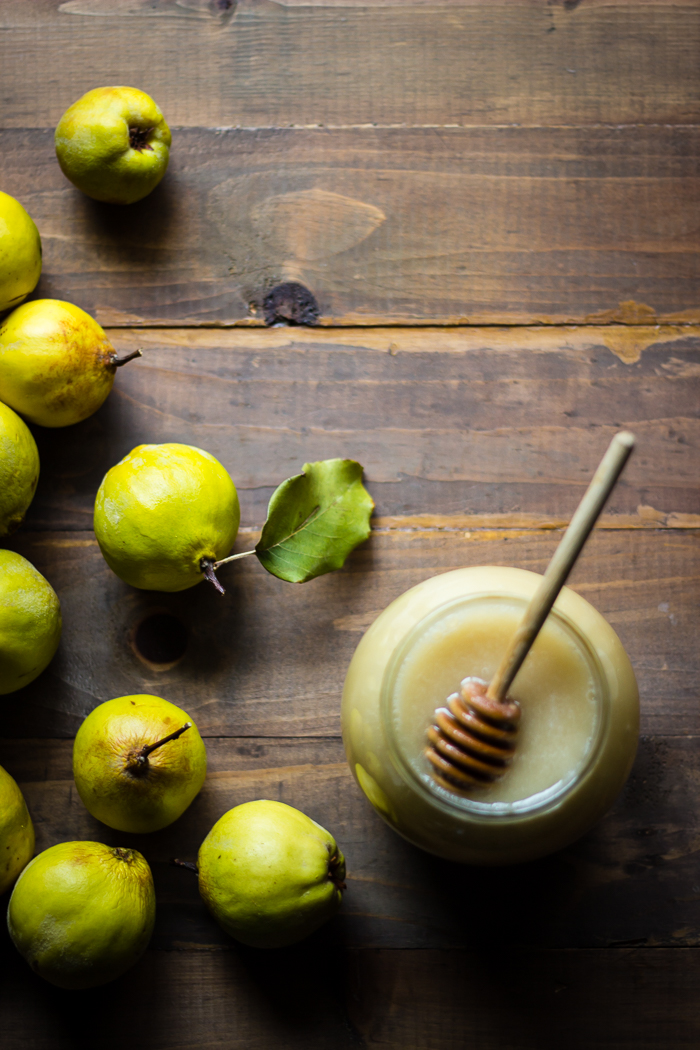
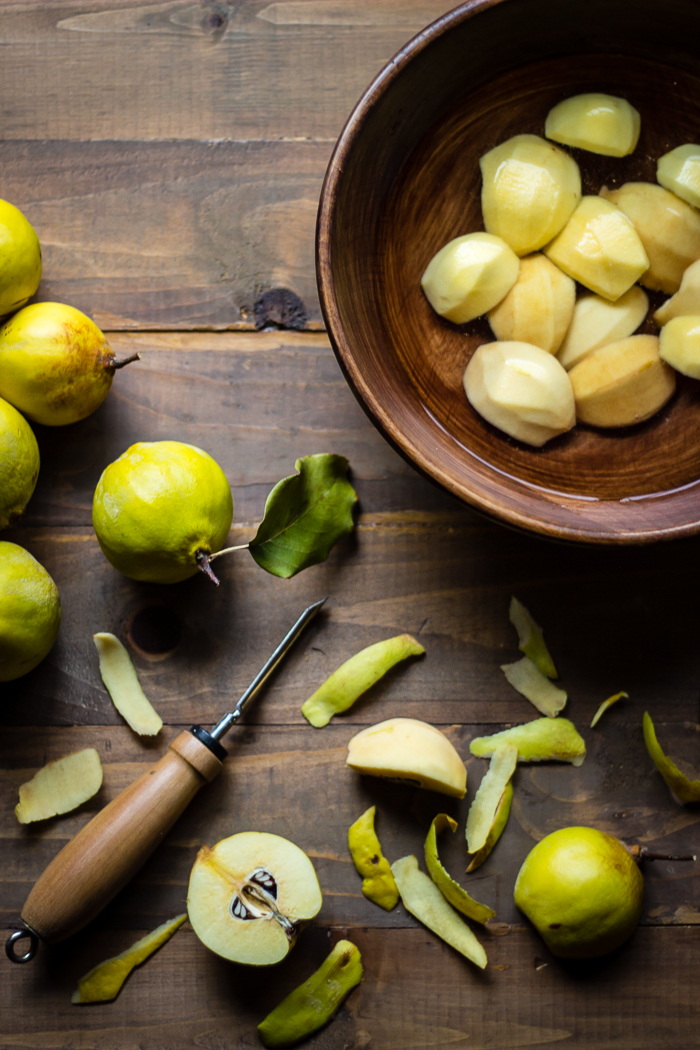
Similar to making a fruit jam or jelly, membrillo really just consists of peeling, seeding and slicing the quince and then simmering them in water until they are nice and soft. The smell of quince simmering fills the house with the most erethreal aroma, a pre-lude to the incredible end result that awaits. The softened quince gets blended with honey and then added back to a pot to slowly simmer to cook off some of the moisture and allow the quince and honey to mingle, which turns the paste the most beautiful peachy rose hue. The thickened paste gets spread into a pan and dried over the course of a day in various stages, until you have blocks of membrillo perfect for pairing with its soul mate the Spanish sheep’s milk cheese manchego.
The process is not difficult, it just takes time for the membrillo to reach the correct consistency. By using honey, which is inherently moist, the process takes much longer than when using refined sugar. But during the time the quince paste is drying in the oven, it does not require anything of you, so it is the perfect project to have slowly drying while you do whatever else you want or need to do.
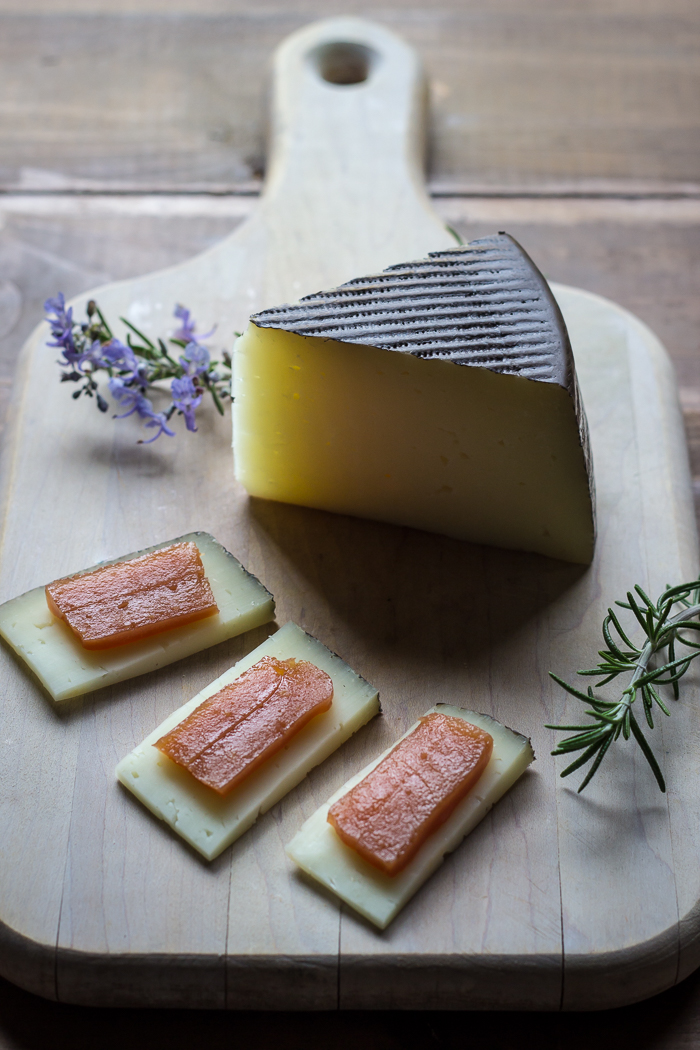
The completed membrillo is best wrapped and stored in the refrigerator until ready to serve. I am sure there are other ways to use membrillo, but I just can’t get away from serving it atop a slice of manchego cheese. A beautiful appetizer or component of a cheese & charcuterie board, membrillo perfectly captures and concentrates everything that is wonderful about quince. I could not help but wrap up and share some of it with our loved ones so that they too could experience this fruit that has captured my heart.
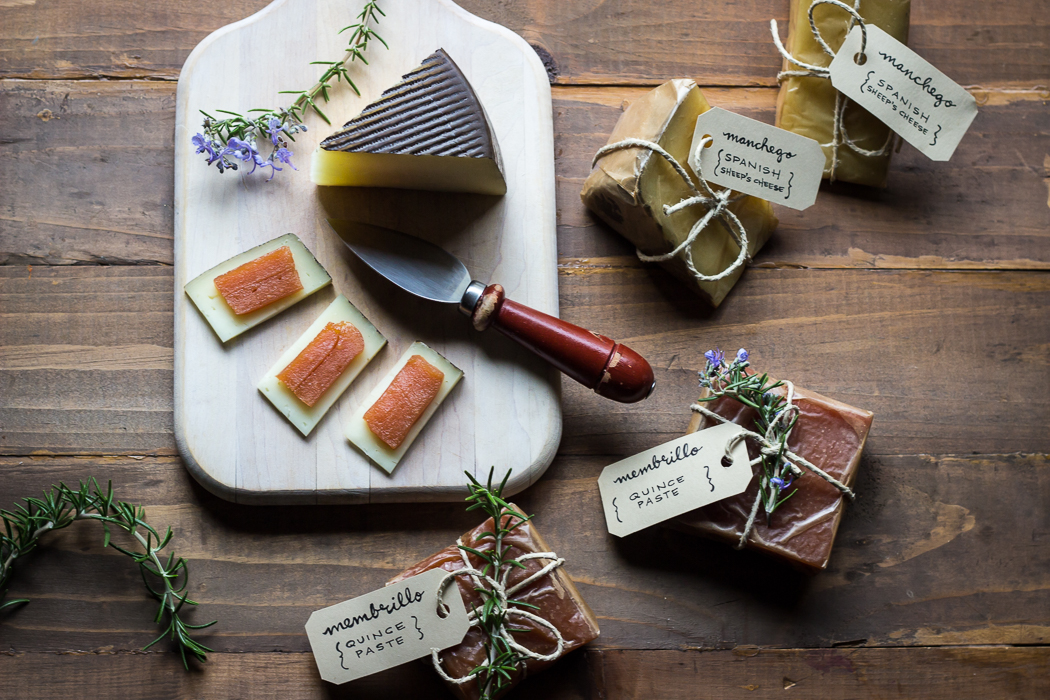 Print
PrintMEMBRILLO | QUINCE PASTE
Ingredients
- 3 1/2 lbs quince, peeled, cored and quartered
- 2 1/2 cups honey
Instructions
- As you peel, core and quarter your quince, drop the prepared fruit into a pot of water to keep the quince from browning
- Once all of the quince are prepped, make sure they are fully submerged in water and bring pot to a simmer over medium low heat – simmer for approx. 2 hours until quince are soft and are easily pierced with a knife
- Drain water from quince and add honey and quince to a blender or food processor – blend until very smooth (alternatively you can add the drained quince and honey to the pot and use a stick blender until very smooth)
- Simmer contents over low heat, stirring often for about 1 1/2 to 2 hours (very low heat is required for this step, just enough to have a low simmer without burning the bottom of the pot)
- Pre-heat oven to 150f (our oven has a drying setting with a fan – use this if you have it)
- Add thickened paste to a 9″x11″ baking pan lined with parchment paper
- Smooth paste until it is evenly distributed in pan and then put pan in oven and dry for 2 hours
- Let paste cool to room temperature. Lift the paste out of the pan by the parchment paper & place onto a baking sheet.
- Use the parchment paper to fold the paste onto itself in 1/2, smooth the edges with a spatula and return paste to the oven to dry for an additional 2 hours.
- Let paste cool to room temperature again, flip it over so the bottom of the paste block is now on top, return to the oven and dry for an additional 2 hours.
- Let paste cool to room temperature once more and then slice paste into desired portions. Separate each portion so air can flow between them and return baking sheet to the oven and dry quince paste portions for an additional 1 hour, let cool to room temperature then wrap them in wax paper or plastic wrap and refrigerate until ready to serve.

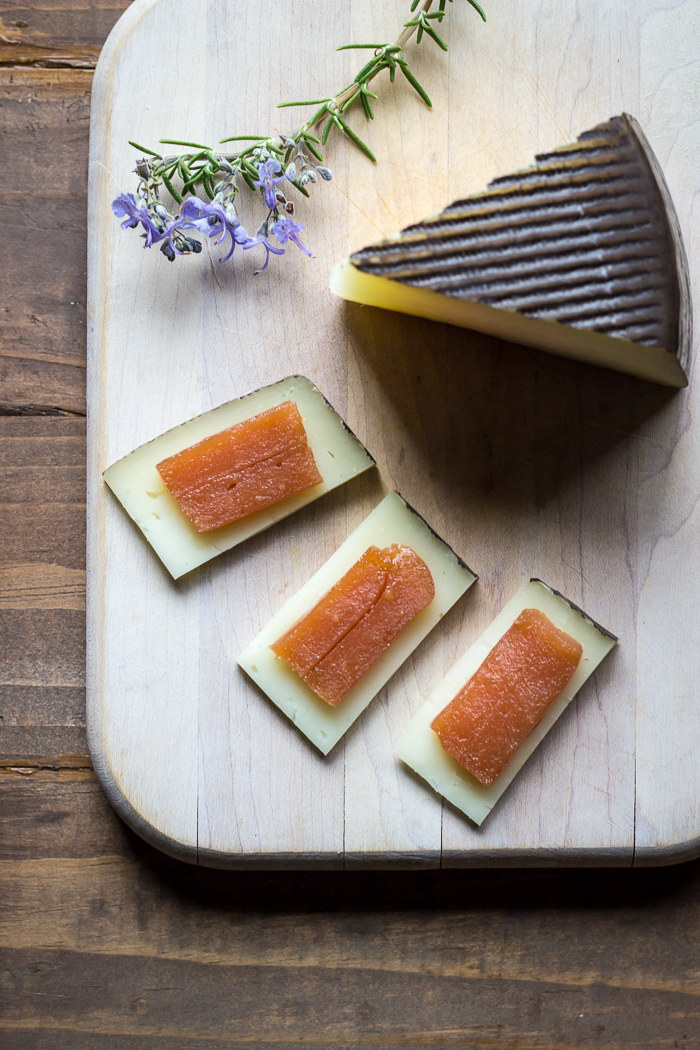

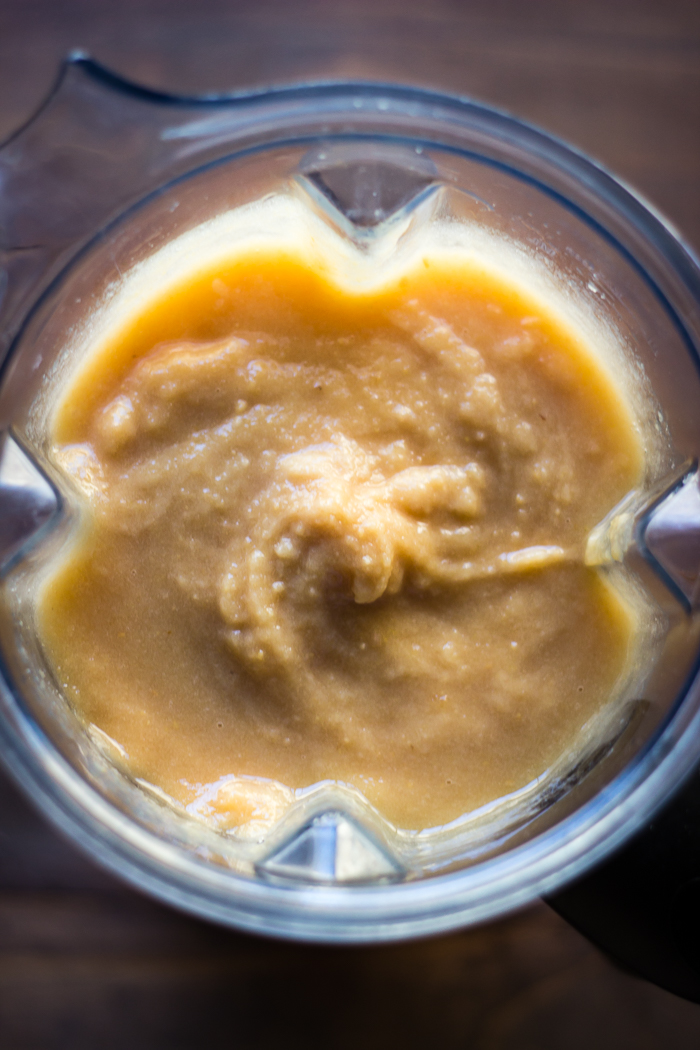
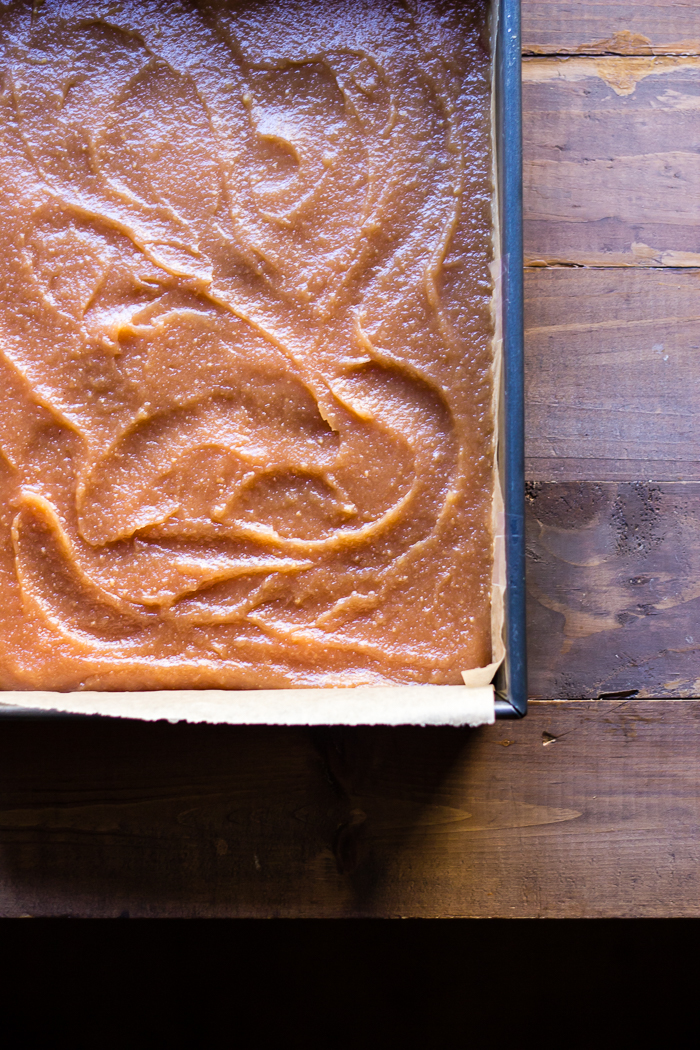
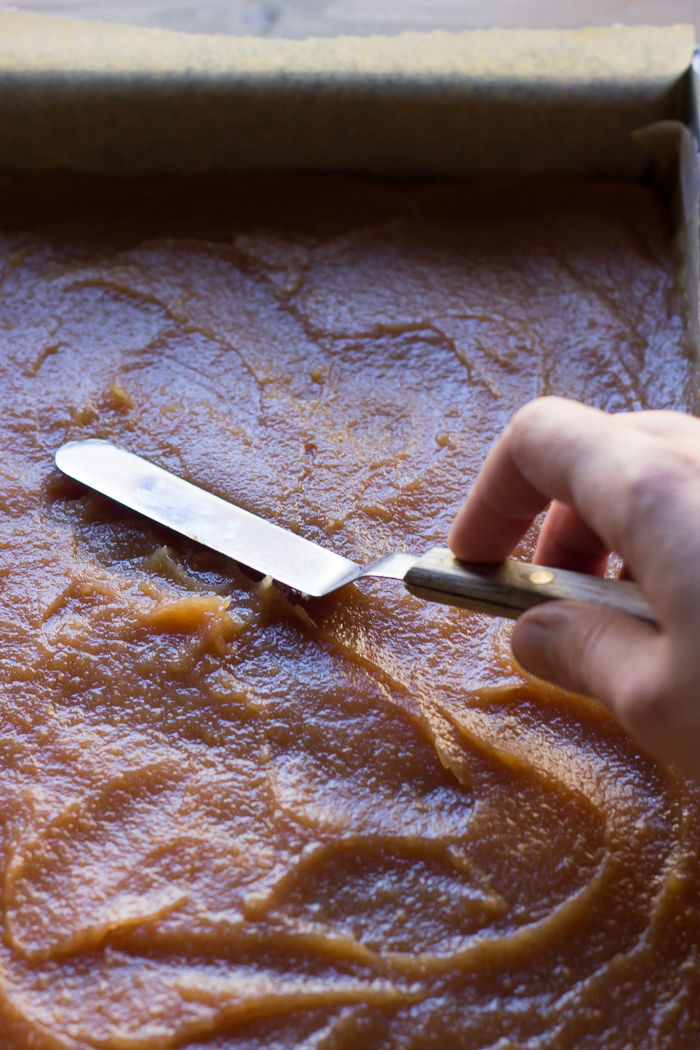
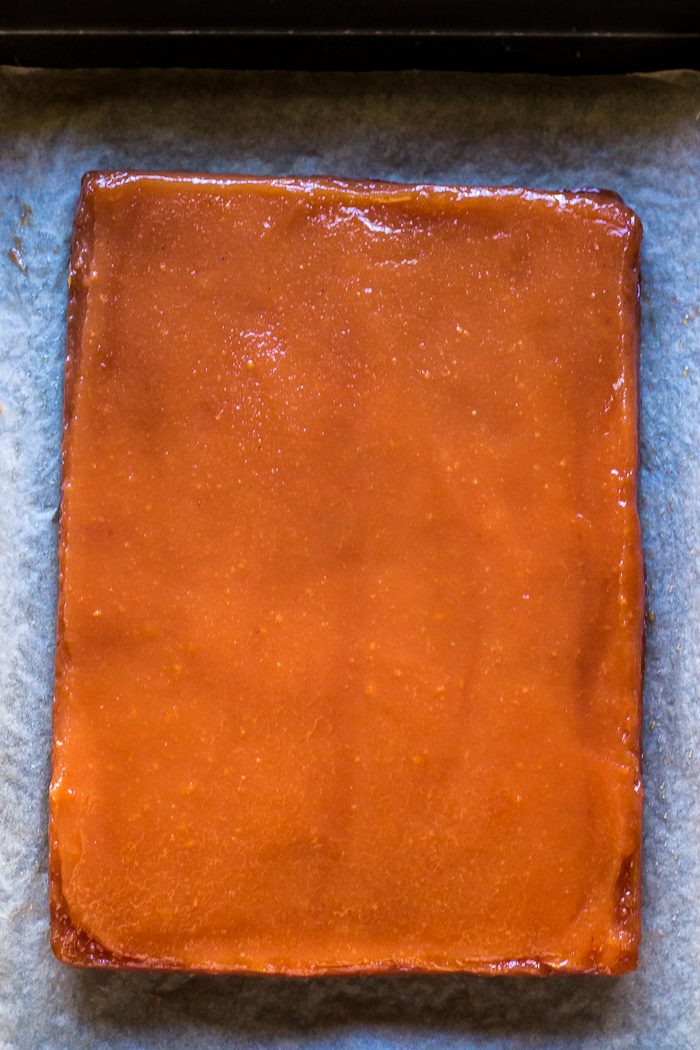
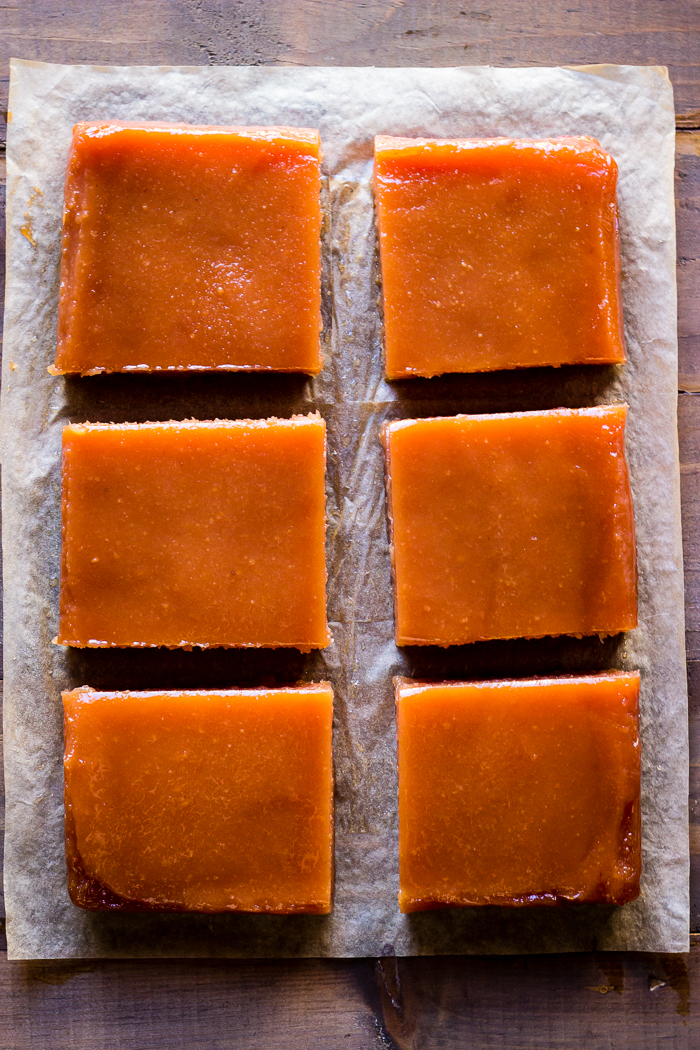

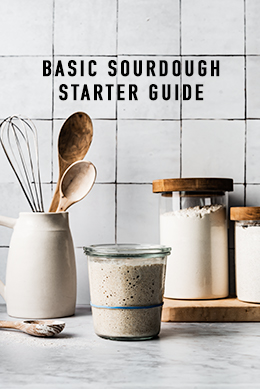
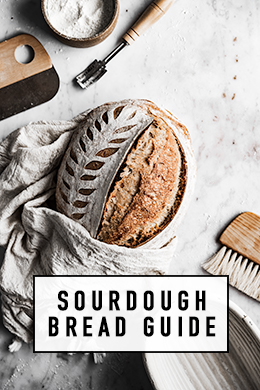





Your photos are beautiful! Enjoying browsing your site. Wish I had thought to make Membrillo a few weeks ago. I have a Quince tree in my backyard–it was so laden with fruit, gave most of it away. Now I know what to do with it all next year! :)
Aw, thank you so much Tanya! Well, at least you know for next year now! <3
I don’t have a very robust (or well sealed) oven, do you have any recommendation that could get the membrillo closer to dry that would shorten (or eliminate) the oven time? My instinct is to cook it down in a pot for longer but thought I’d check to see if there might be complications from that that you had run into. Any help would be appreciated.
Thanks!
Nedah
You can absolutely try to cook it down more, but you will have to keep a very watchful eye to make sure it does not burn. I noticed that as the puree got thicker I had to be right on top of it! Let me know how it goes for you!
It ended up needing some oven time but not as long which helped make up for a terrible apartment oven. When cooking down the mixture I had less trouble avoiding burning than I did getting the additional moisture out. It all worked out well in the end and I’ll be stocked up on membrillo until quince season returns when hopefully I will have found a way to a better oven. Thanks for the help!
You are so welcome Nedah! I am happy you found a way in the end! And here’s to a new oven!
Would it work to microwave the quinces just a bit to soften for easier cutting up and peeling? Would that spoil the result?
Someone gave me a dozen quinces and I want to make some membrillo~
Hi Toby! I have never tried microwaving them, but they will soften if you let them sit to ripen at room temperature for a week or so. The quinces should be yellow and smell super fragrant, this is how you know they are ripe and they should be easier to cut & peel once they are ripe as well.